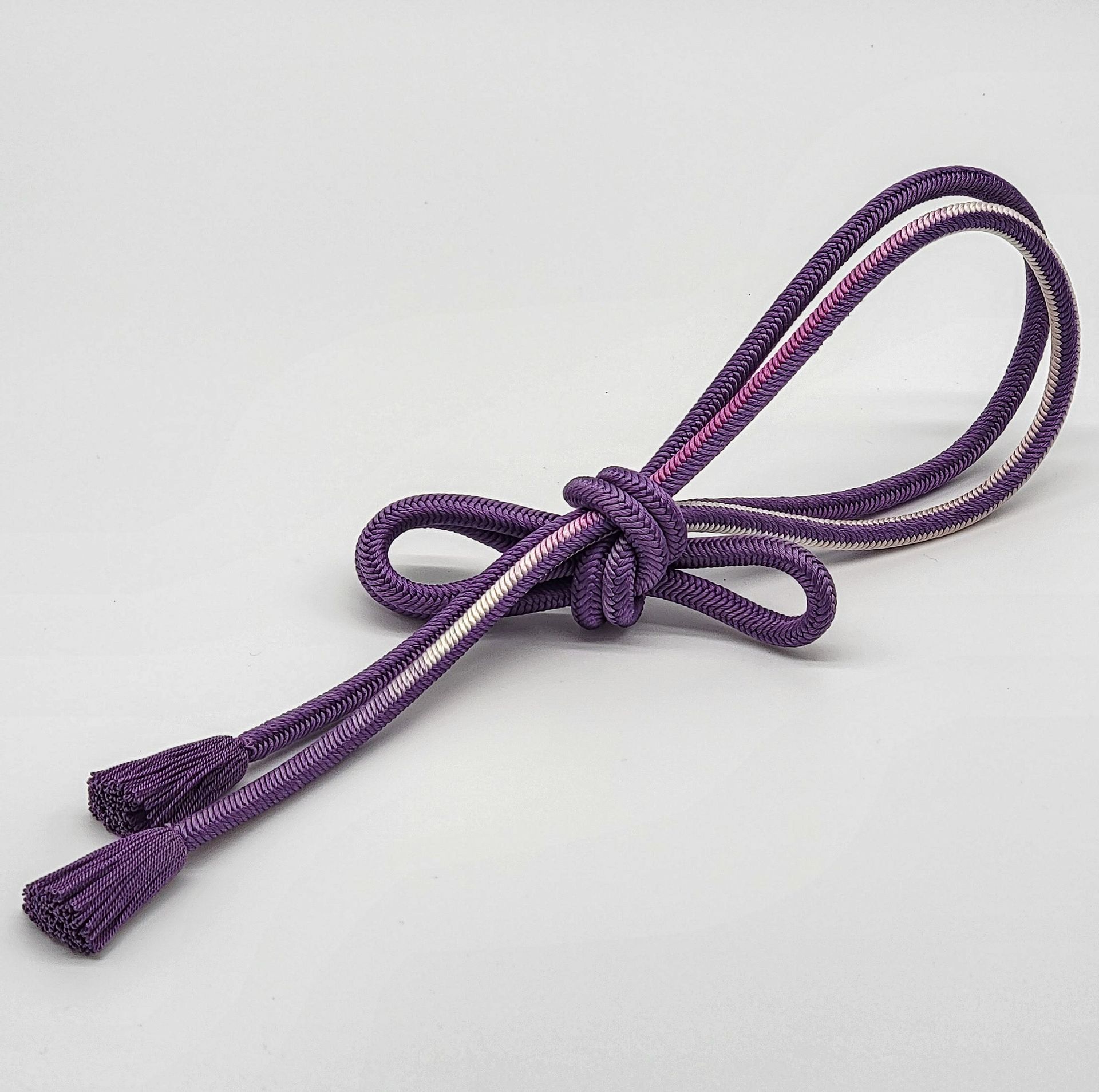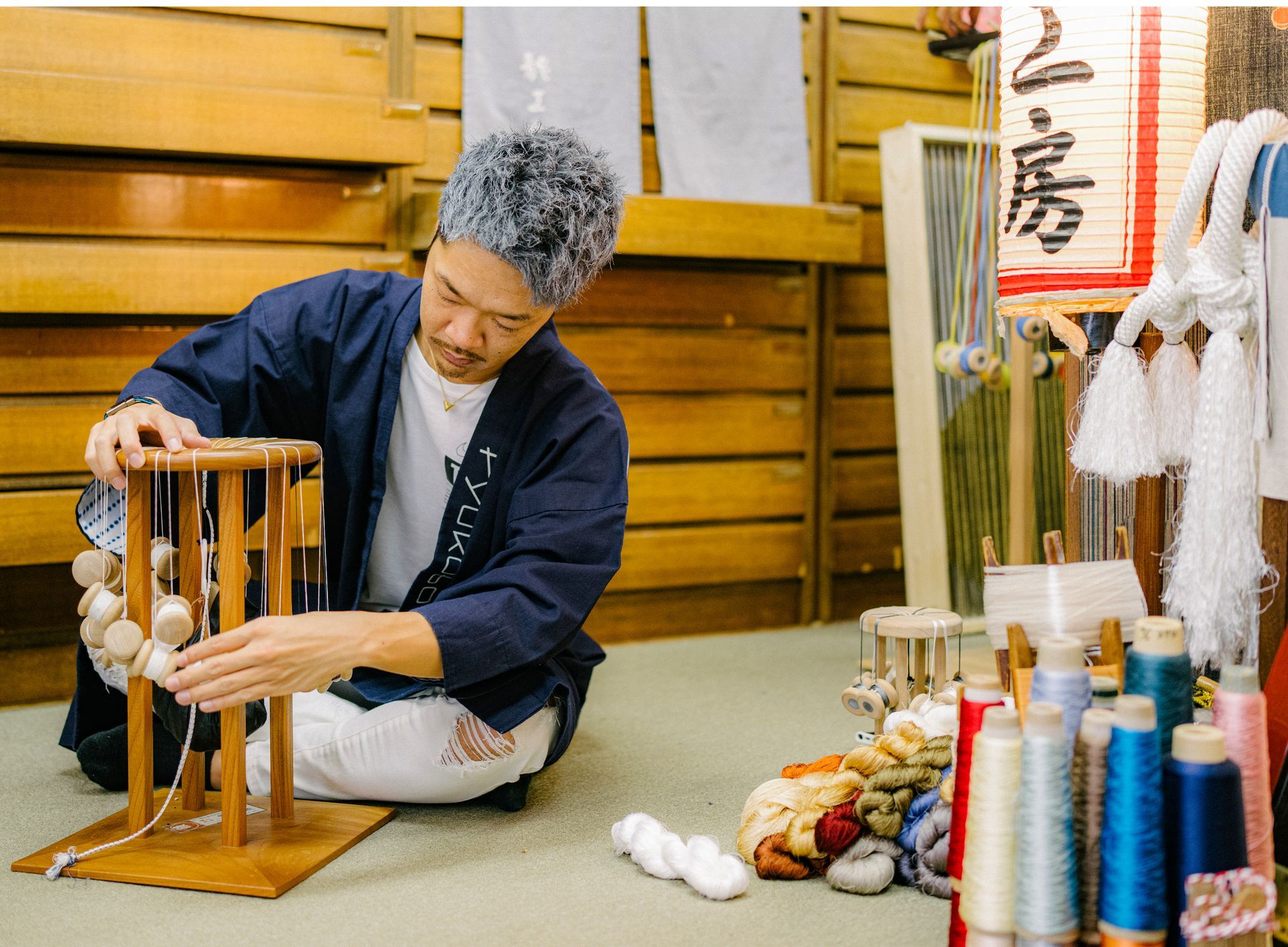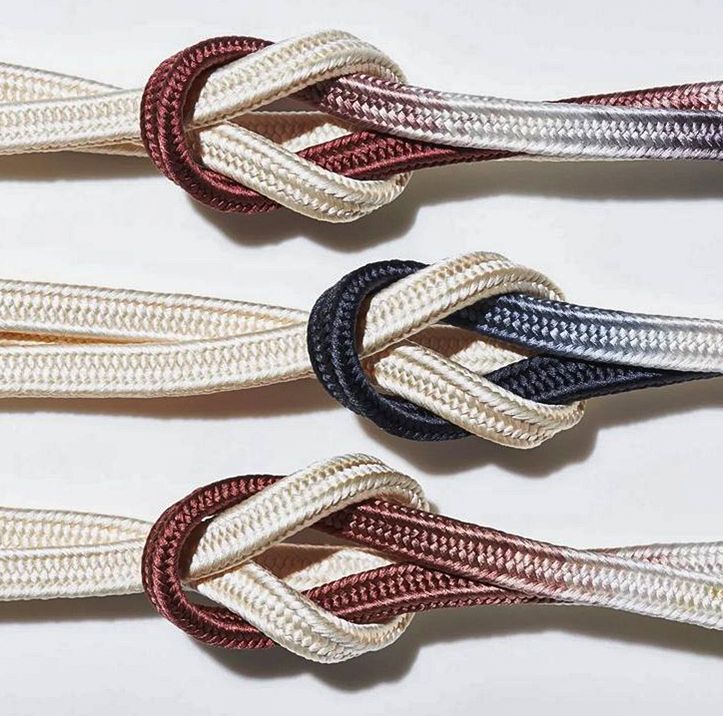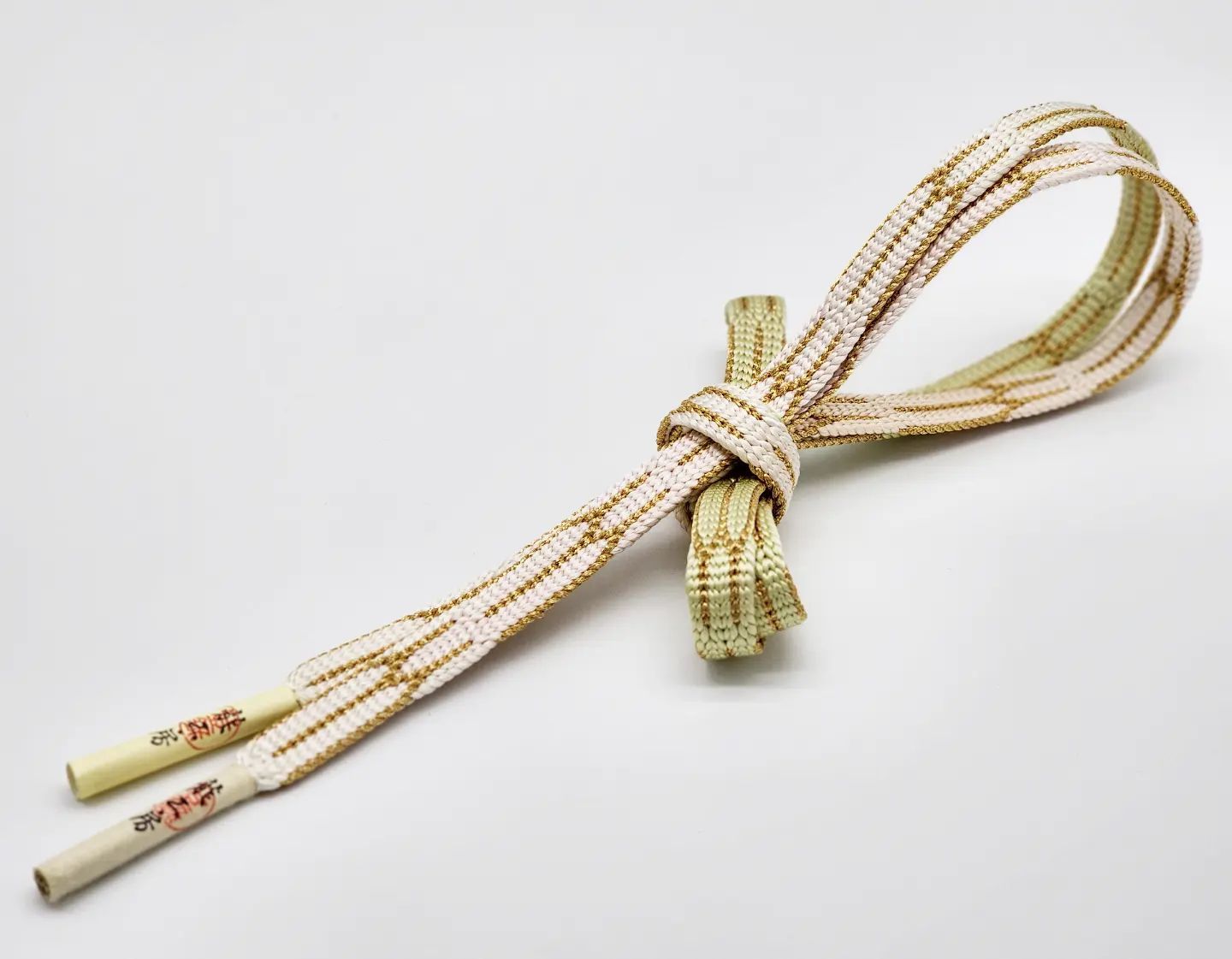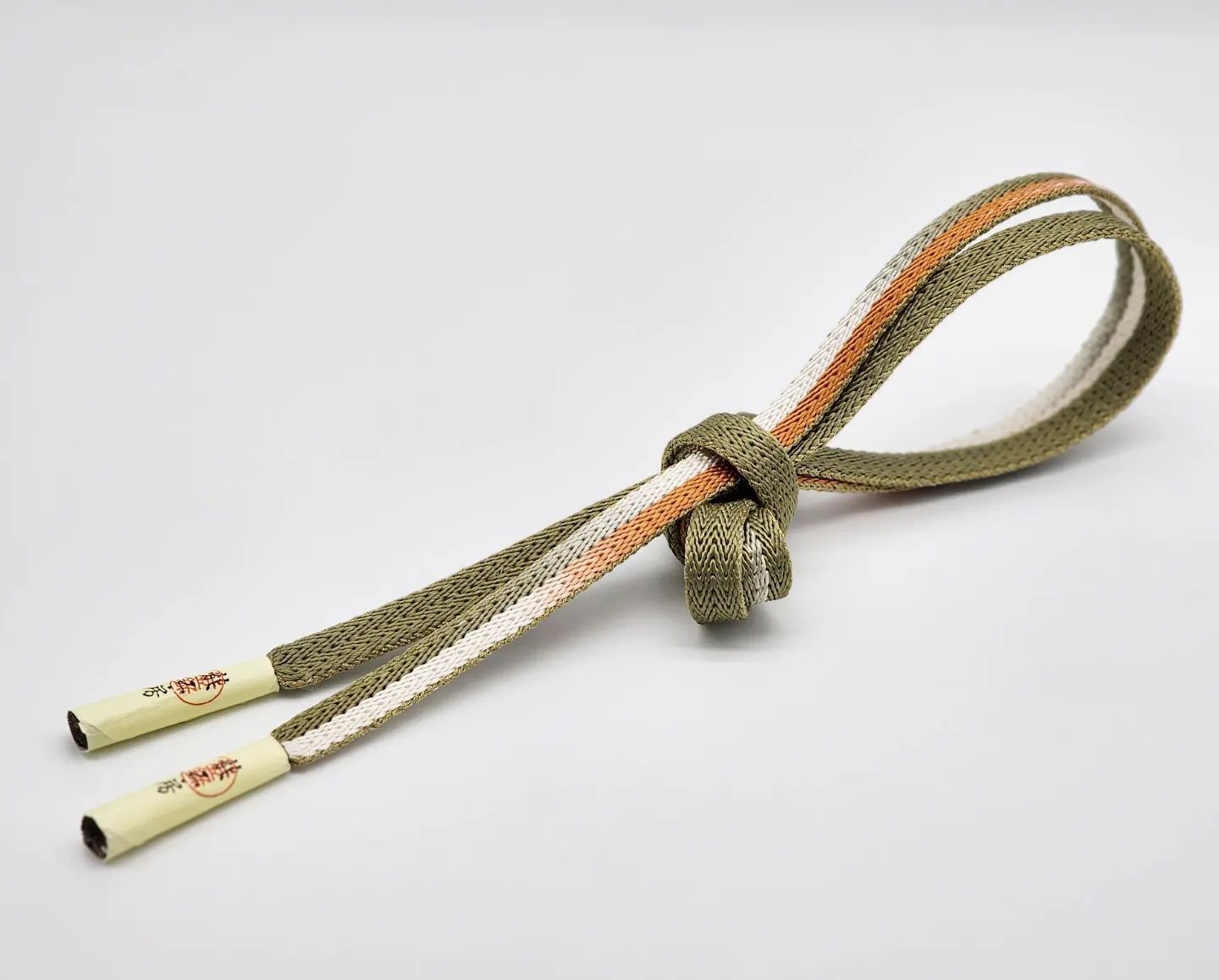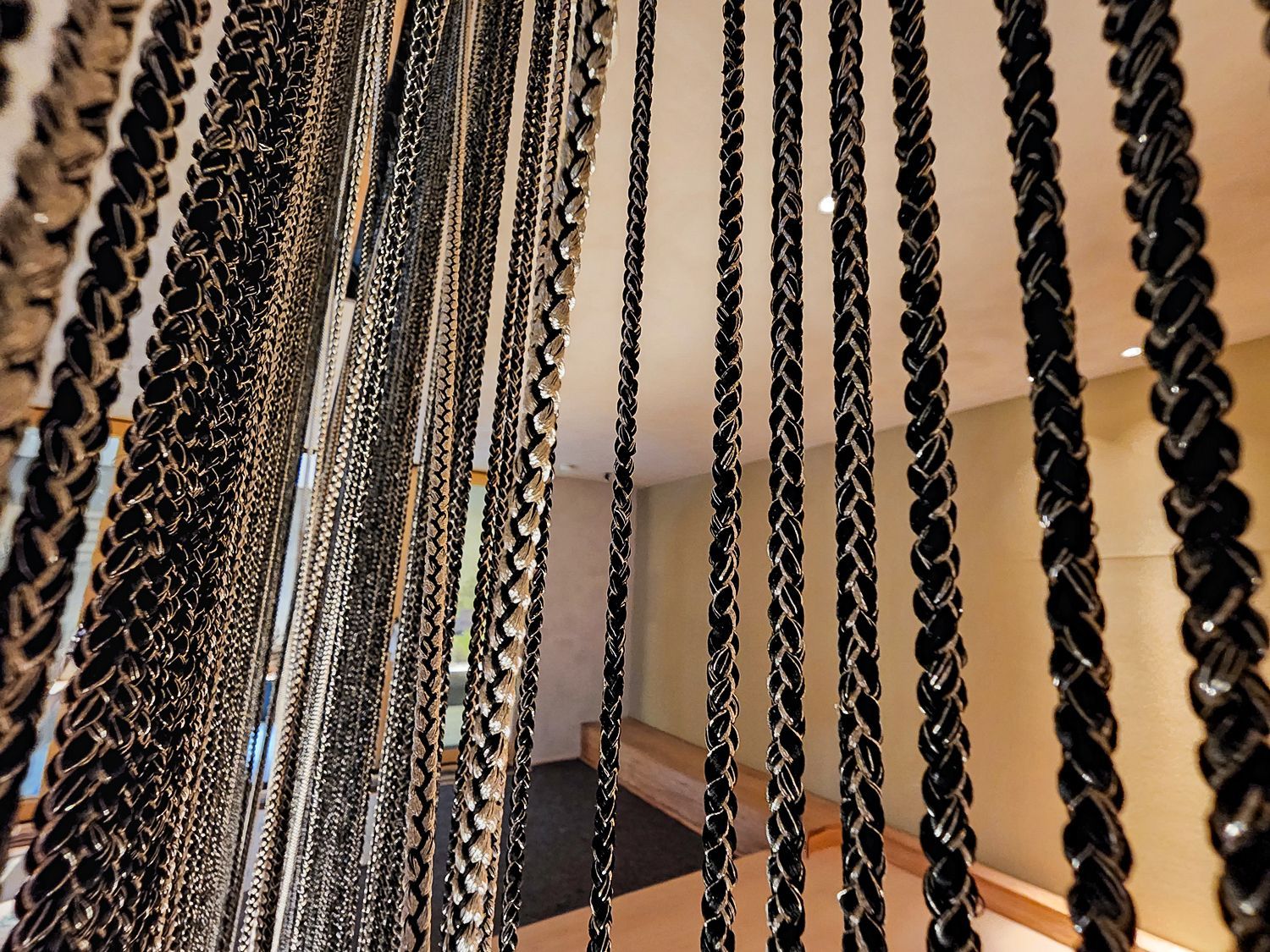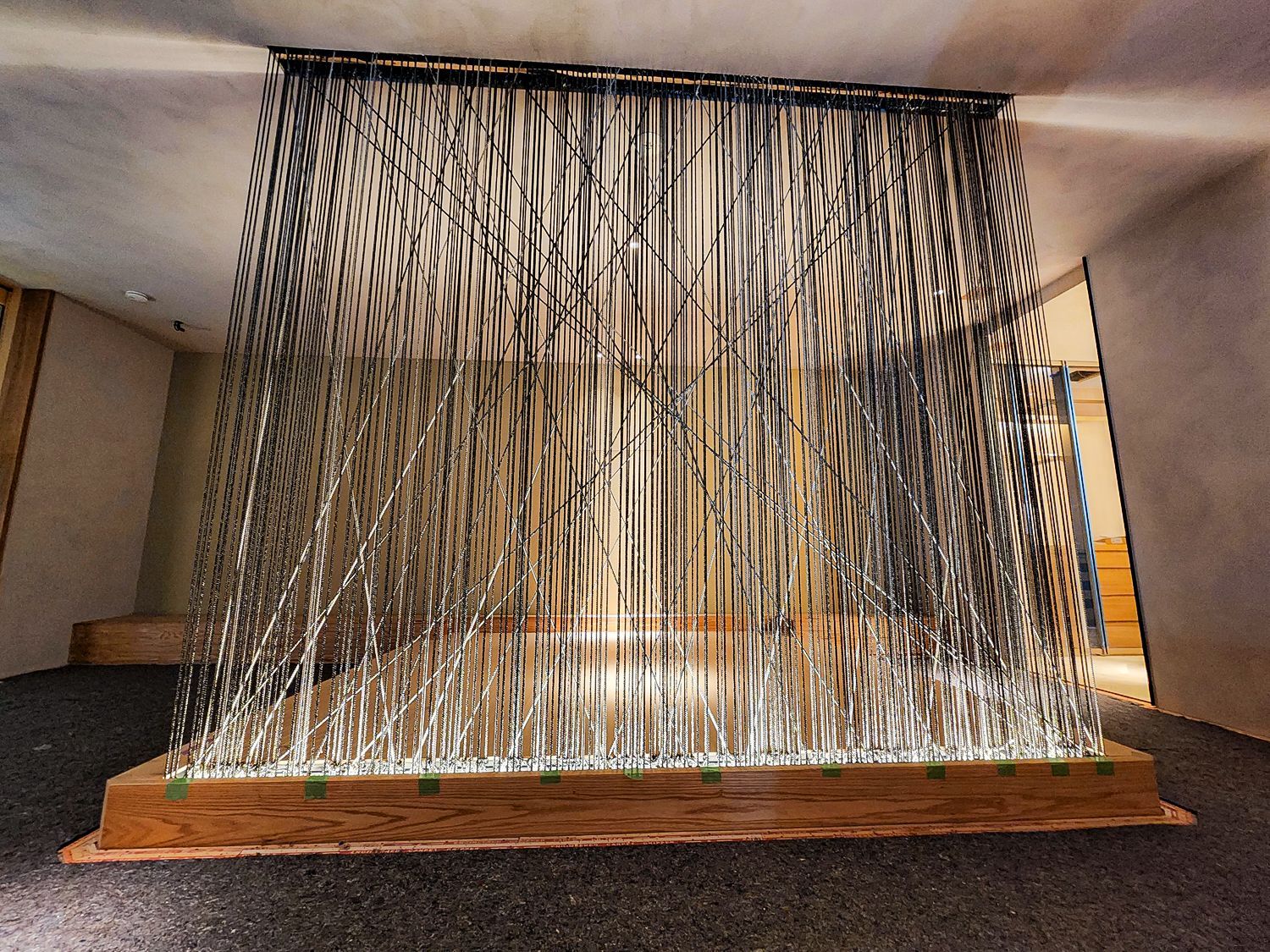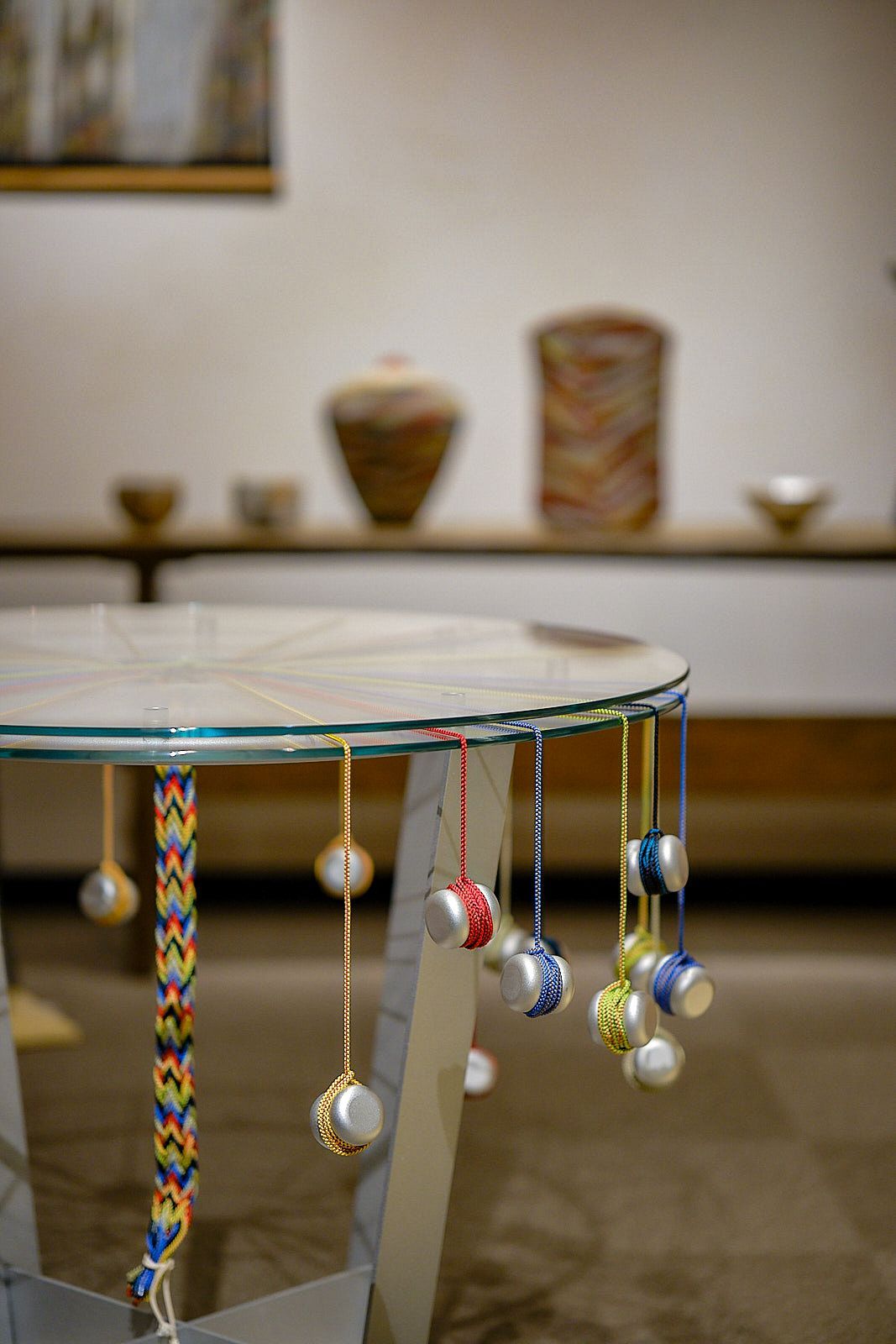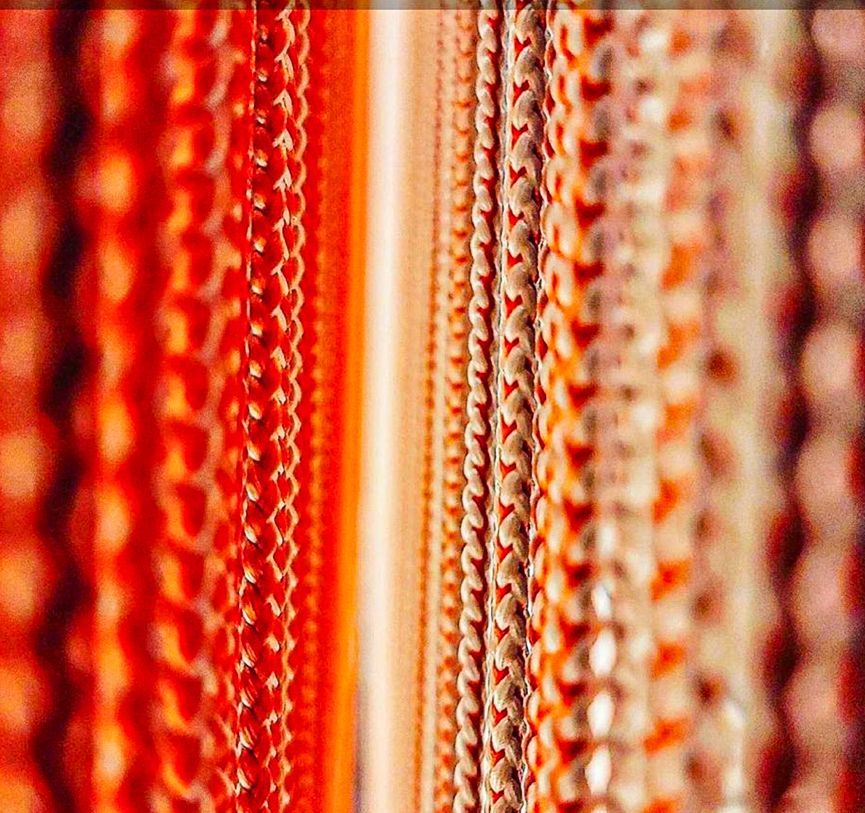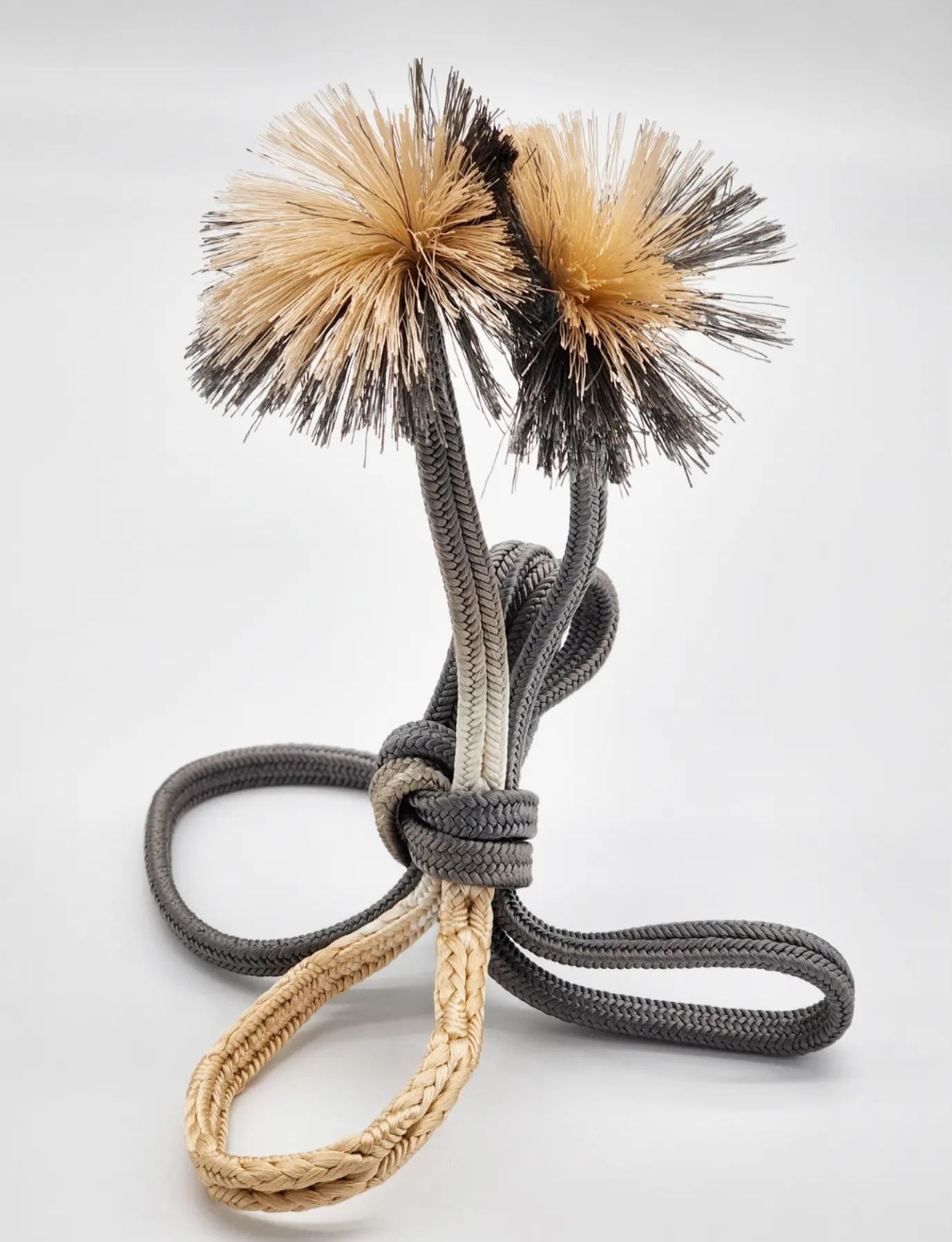Braiding by Ryuta FUKUDA
ButtonA silk kumihimo cord consisting of a complex hand-braided pattern, with a progressive gradation of color ranging from white to deep lavender.
Ryuta FUKUDA
Kumihimo ・
Braided Cords ・ Tokyo
-
Artist's Story
Ryuta FUKUDA is a weaver of silk kumihimo cords, a traditional braiding technique practiced in Japan for more than 1,400 years. He was born and raised in the same Tokyo downtown Nihonbashi district where his family has been weaving since 1889.
Up until recently, the family business focused on obijime chords for kimono obi, both functional and decorative accessories. For the past 10 years, his family have been actively developing new uses for woven cords. Their high-quality work has attracted the patronage of the Imperial family as well as icons of Japanese traditional culture, such as stars of Kubuki theater and sumo wrestlers.
International collaborations include the creation of large-scale window treatments for Hermès boutiques in both Osaka and Tokyo. Other uses for kumihimo are interior partitions for high-end residences, furniture cushions and lanyards for the 2020 Tokyo Olympic medals. Their recent work aims to develop more innovative products by experimenting with new materials, thereby revitalizing the image of their traditional craft.
Fukuda works with a collaborative of 50 young people who are involved in all areas of kumihimo production, including the revitalization of domestic silk cultivation, yarn dyeing, weaving, and related production components. After planting silk mulberry trees at local schools, the family began an educational program where they teach neighborhood children how to grow silkworms, harvest silk, and turn it into yarn. Less than one percent of the silk used in Japan is domestically grown and the Fukuda family is actively working towards its revitalization.
-
About the Craft
Kumihimo 組紐 Chords. The Japanese have been making Kumihimo chords since the process was introduced from Korea around 700 A.D. It is a traditional technique of braiding strands of silk to create intricately colored chords that have a multitude of uses.
Kumihimo are woven by a complicated process involving a crisscross diagonal braiding of bundles of yarn. This braiding, ranging from round chords to highly complex square or flat cords, requires exceptional skill.
By changing the color of just one thread, the artist can greatly alter its appearance and feel. Cords can be shaped into intricate knot patterns. There are about 800 knot styles in the Japanese culture, not including nautical knots.
Kumihimo were originally used to adorn Buddhist articles of worship and hanging art scrolls. Even today, they are used on formal Buddhist vestments worn by priests, on traditional processional Shinto floats, samurai swords and armor, interior furnishings, tying finely crafted boxes and pouches, and securing the kimono obiage (sash) among others. Today, kumihimo are incorporated into contemporary fashion and design.
-
Click Image to Enlarge
ButtonObijime cords used for tying obi (kimono sashes); complex gradation dye process
-
Click Image to Enlarge
ButtonObijime cord used for tying obi (kimono sashes); complex weaving
-
Click Image to Enlarge
ButtonObijime cords used for tying obi (kimono sashes); complex gradation dye process
-
Click Image to Enlarge
ButtonA room partition consisting of kumihimo cords of numerous color combinations and braiding styles
-
Click Image to Enlarge
ButtonA room partition consisting of kumihimo cords of numerous color combinations and braiding styles
-
Click Image to Enlarge
ButtonAn original glass top, stainless steel table that mimics a traditional marudai kumihimo weaving device
-
Click Image to Enlarge
ButtonWindow treatment at prestigious boutique in Tokyo consisting of kumihimo cords of numerous color combinations and braiding styles
Click Image to Enlarge
Obijime cords used for tying obi (kimono sashes); complex gradation dye process

